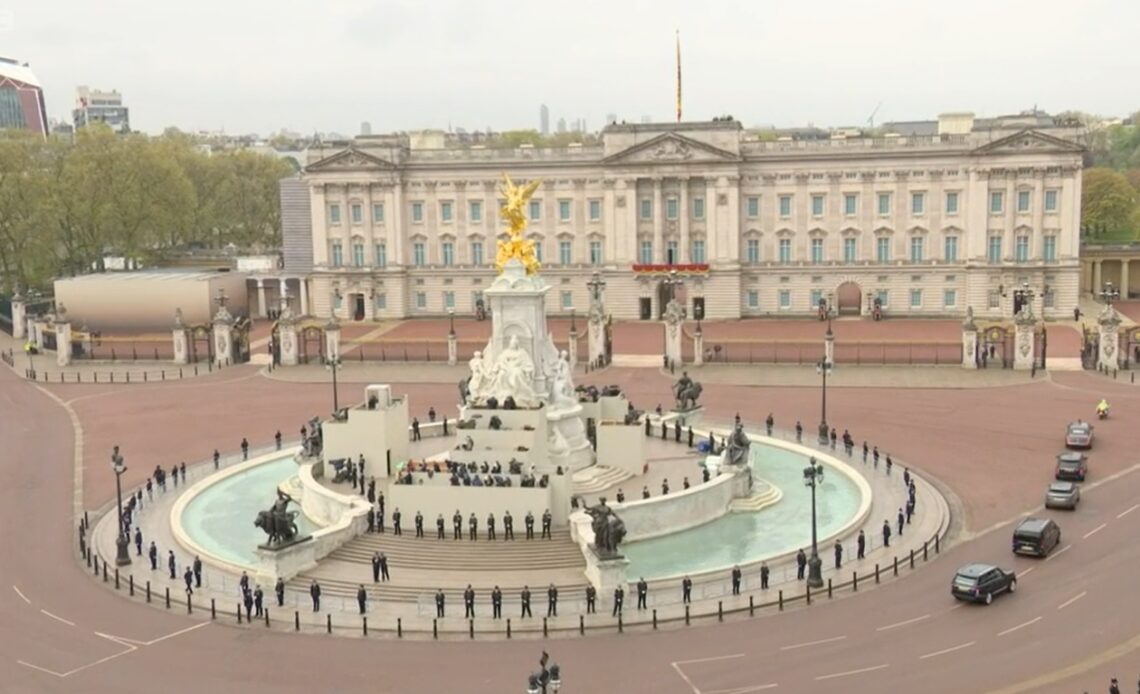
When people think of London, there are probably a few things that come to mind. From Big Ben to red phonebooths there are iconic images of the capital that everyone knows. But if there is any palace someone recognises, it’s likely Buckingham Palace.
Originally known as Buckingham House, the building was a large town home built for the Duke of Buckingham in 1703 on land that had been in private ownership for at least 150 years.
While the Duke of Buckingham called Buckingham House home in the 18th century, the history of what we now know as Buckingham Palace dates back to the 16th century. In the middle ages, the site of the palace was part of the Manor of Ebury (also called Eia.) This was a marshy groundwater by the river Tybum. That river actually still flows below the courtyard and south wing of the palace today. Since the river was fordable, ownership of the site changed many times.
In 1531, Henry VIII acquired the Hospital of St James, now St James’s Palace, from Eton College. Five years later, he took the Manor of Ebury from Westminster Abbey. This would mark the first time the site of Buckingham Palace was back in royal hands since William the Conqueror gave away the land nearly 500 years prior. By this time, the area had mostly fallen into decay and was mostly a wasteland.
It’s believed the first house was erected around 1624 for Sir William Blake. Throughout the years, the site saw many owners including Lord Goring who, from 1633 extended Blake’s house. It became known as Goring House. In 1698, John Sheffield acquired the lease. He would later be known as the first Duke of Buckingham and Normanby. Goring House had burnt down in 1674, Buckingham House was built for Sheffield to the design of William Winde. The design featured a large, three-floored central block with two smaller flanking service wings.
Embed from Getty ImagesGeorge III bought Buckingham House in 1761 for his wife Queen Charlotte to use as a comfortable family home close to St James’s Palace. At this time, St James’s was the official and ceremonial royal residence. Upon the succession of George IV in 1820, he decided to reconstruct the house into a palace. George, however, would never move into the palace as he died in 1830. His younger brother, William IV hired an architect to finish the renovations his brother wanted. After the Palace of Westminster was destroyed in 1834, William offered to convert Buckingham Palace into a new Houses of Parliament but that offer was declined.
Upon the accession of Queen Victoria, Buckingham Palace became the primary royal residence. She would be the first sovereign to take up residence, and the first British sovereign to leave from the palace for a Coronation. With a growing family, the palace became too small for Victoria and Prince Albert. A new wing would be designed enclosing the central quadrangle, the portion of the palace with the famous balcony many see today when they visit, or during royal events such as the annual Trooping the Colour. After the death of Prince Albert, Queen Victoria withdrew from public life and Buckingham Palace and went to live at Windsor Castle, Balmoral Castle, and Osborne Castle.
The last major building work took place during the reign of George V in 1913. The principal façade was designed to be a backdrop to the Victoria Memorial. During the First World War, which lasted from 1914 to 1918, the palace remained undamaged although its more valuable contents were taken to Windsor while the royal family remained in residence at Buckingham. During World War II, the palace was bombed nine times. One bomb fell in the palace quadrangle while George VI and Queen Elizabeth The Queen Mother were in the palace.
Embed from Getty ImagesQueen Elizabeth II would take up Buckingham Palace as her primary residence until her later years when she made Windsor Castle her main home. Today, Buckingham Palace continues to be a working building and the center of the UK’s constitutional monarchy. Amid offices and royal residences, the palace is used for many events and ceremonies throughout the year from garden parties to celebrating achievements at Investitures. While restoration work continues at Buckingham Palace, King Charles and Queen Camilla live at Clarence House although His Majesty continues official business at Buckingham including weekly appointments with the Prime Minister.
Every summer, Buckingham Palace opens for tours. It is open now until Sunday, 24 September 2023. You can book tickets, here.

